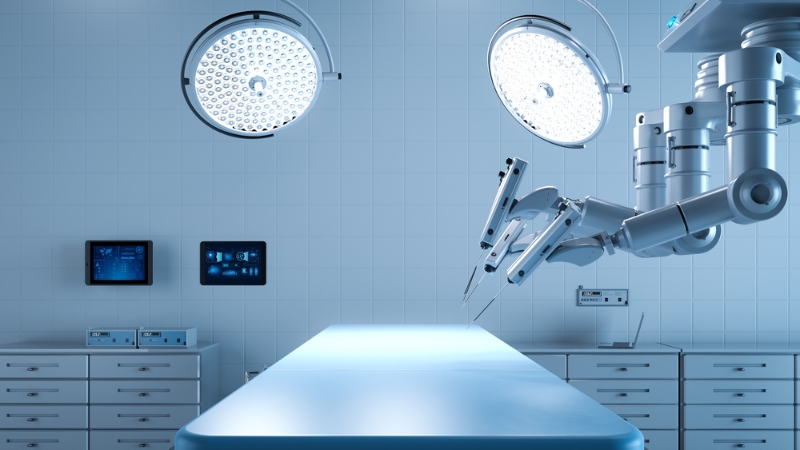Robotic-Assisted Surgery"Advancing Precision and Minimally Invasive Interventions."

We offer state-of-the-art equipment for accurate and minimally invasive operations across numerous medical disciplines. Our medical center specializes in Robotic-Assisted Surgery. Understanding the benefits of robotic support for surgical procedures, our processes are engineered for maximum accuracy, accelerated healing, and best possible outcomes for patients. This section will discuss the importance of robotic-assisted surgery, the conditions it treats, possible drawbacks, and the unique qualities that set us apart as a premier provider of top-notch care at the cutting edge of medical technology.
What Is Robotic-Assisted Surgery?
A novel surgical technique known as "robotic-assisted surgery" uses robotic technology to help surgeons carry out different operations with more control and precision. Because of this cutting-edge technology, minimally invasive procedures can be performed, which frequently leads to smaller incisions, less scarring, and quicker recovery times.
Why Is Robotic-Assisted Surgery Necessary?
- Enhanced Precision: In order to accomplish improved precision in sensitive procedures and enable surgeons to execute complex movements with more accuracy, robotic-assisted surgery is required.
- Minimally Invasive: This method is crucial for minimally invasive operations, in which a magnified, three-dimensional image of the surgical site is provided by robotic arms and a console.
Possible Risks:
Although they are uncommon, dangers associated with robotic-assisted surgery could include bleeding, infection, harm to adjacent tissues, or problems with the robotic system itself. Surgeon knowledge and strict safety practices can reduce these hazards.
Treatment Steps in Robotic-Assisted Surgery:
- Pre-operative Planning: Thorough preparation of the surgery, encompassing determination of the precise robotic instruments required and evaluation of the patient's suitability for robotically assisted treatments.
- Patient Positioning: Placing the patient on the operating table so that the robotic system has the best possible access to the surgical site.
- Robotic System Setup: Robotic system setup and calibration, which includes the positioning of robotic arms and tools under the direction of the surgeon's commands at the console.
- Surgeon Console Operation: Operating from a high-definition, three-dimensional image of the surgical site, the surgeon uses hand and foot controls to manipulate the robotic arms and equipment.
- Surgical Procedure: The robotic arms enable precise motions during the surgical procedure, enabling careful incisions, suturing, or tissue excision.
- Real-time Monitoring: The surgical team will continuously monitor the procedure to make sure the robotic technology is operating properly and to quickly resolve any problems.
- Post-operative Care: Keeping an eye on the patient's recuperation and offering post-operative care, such as pain relief and guidelines for the best possible healing.
- Follow-up Appointments: Arranged follow-up appointments to review long-term results, resolve any issues, and evaluate the patient's healing progress.
Our dedication to using cutting-edge technology for better patient outcomes is demonstrated by our robotic assisted surgery services. Our talented surgical team uses robotic technology to improve the surgery experience and help patients recover as much as possible by fusing creativity and precision. Our medical staff is here to help if you have any questions or need more information regarding robotic-assisted surgery.
Top Asked Questions and Answers:
FAQ (Frequently Asked Questions):
+91-9144411108
Emergency Cases

